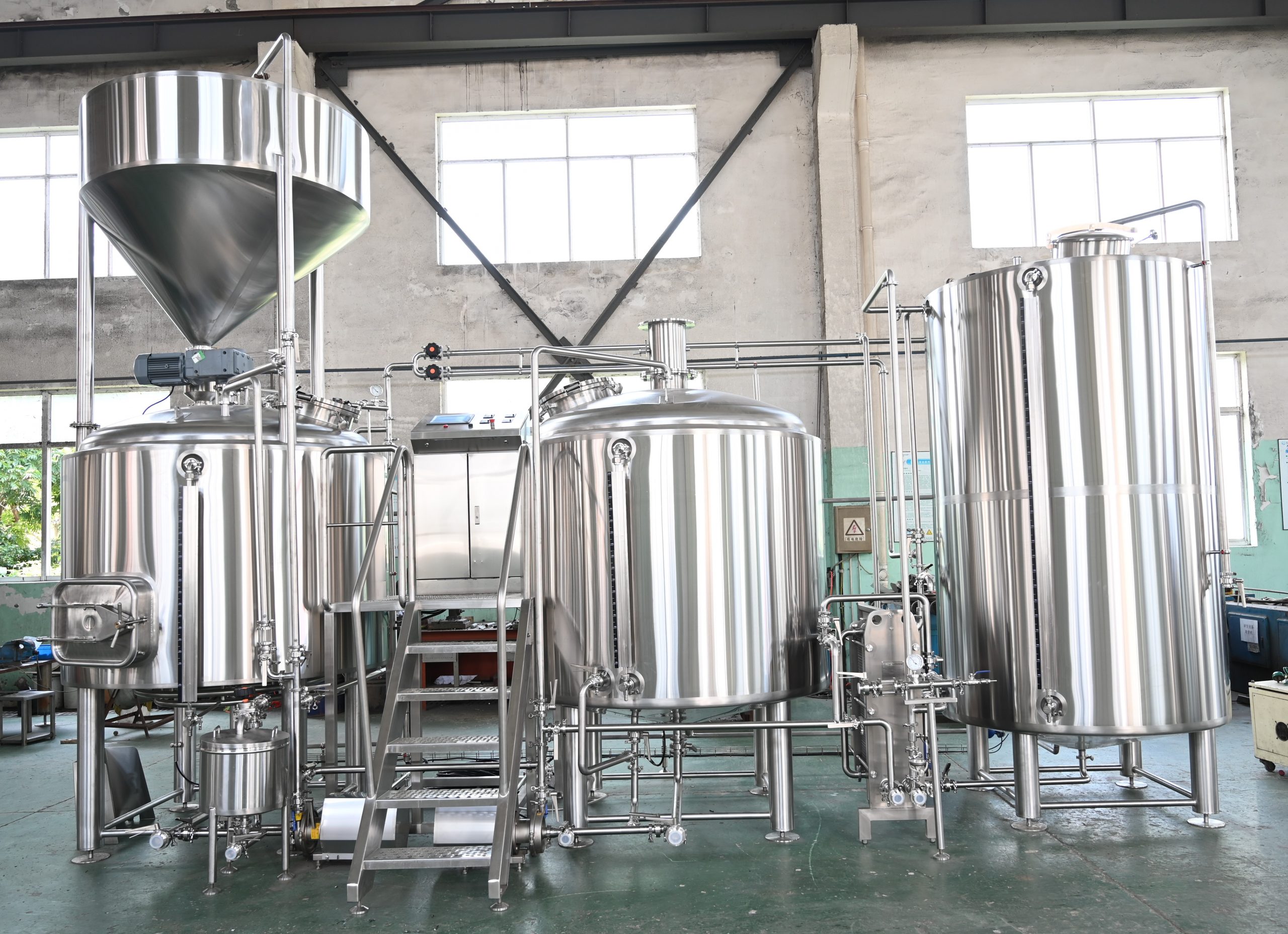
How To Build a Beer Brewing System?

Building a beer brewing system involves several components and considerations, ranging from the brewing vessels and equipment to the plumbing and controls. Here’s a general outline of the steps and components involved in building a basic beer brewing system. Keep in mind that the complexity and features of your system may vary based on your brewing goals and preferences.
1.Design and Planning:
Determine the size and scale of your brewing system (e.g., homebrew setup, microbrewery, commercial brewery).
Decide on the type of brewing system (e.g., all-grain, extract, infusion, decoction).
Plan the layout of your brewery space, considering factors like space, ventilation, plumbing, and electrical requirements.
2.Brewing Equipment and Components:
Mash Tun: A vessel for mashing grains to convert starches to sugars.
Brew Kettle: A vessel for boiling and hop additions.
Fermenters: Vessels for fermenting and conditioning the beer.
Bright Tank: A tank for final conditioning and carbonation.
Heat Source: Burners or heating elements for boiling and maintaining temperatures.
Cooling System: Wort chiller for rapidly cooling boiled wort.
Pumps: For transferring liquids between vessels.
Plumbing: Pipes, valves, and fittings to connect components.
Controls: Temperature controllers, timers, and automation if desired.
3.Construction:
Build or acquire the brewing vessels. These can be made from stainless steel, aluminum, or other food-grade materials.
Set up a sturdy frame or stand to support the vessels.
Install burners or heating elements under the brew kettle and mash tun.
Connect pumps, plumbing, and valves to create a fluid circulation system.
4.Electrical and Plumbing Work:
If using electrical heating elements, ensure proper electrical connections and safety measures.
Install temperature sensors and controllers for precise temperature regulation.
Set up a wort chiller for cooling the boiled wort.
5.Testing and Calibration:
Test the entire system for leaks, proper circulation, and temperature control.
Calibrate temperature sensors and controllers.
6.Brewing Process:
Mash: Heat water in the mash tun, add grains, and maintain specific temperatures for enzymatic reactions.
Boil: Transfer the mash to the brew kettle, bring to a boil, and add hops at different times.
Cooling: Use the wort chiller to rapidly cool the boiled wort before transferring it to a fermenter.
Fermentation: Transfer the cooled wort to a fermenter, pitch yeast, and monitor fermentation progress.
Conditioning: Optionally, transfer beer to a bright tank for final conditioning and carbonation.
7.Automation and Controls (Optional):
If desired, integrate temperature controllers, timers, and automation systems to streamline the brewing process.
8.Cleanup and Maintenance:
Regularly clean and sanitize all components to ensure the quality and safety of your beer.
Perform routine maintenance on pumps, heating elements, and other equipment.
9.Safety and Regulations:
Adhere to local health and safety regulations and obtain any necessary permits or licenses for operating a brewing system.

Please note that building a brewing system can be a complex and involved process, especially for larger-scale systems. It’s important to have a good understanding of brewing principles, equipment, and safety measures before attempting to build your own system. If you’re new to brewing, consider starting with a smaller homebrew setup or seeking guidance from experienced brewers and professionals.



















